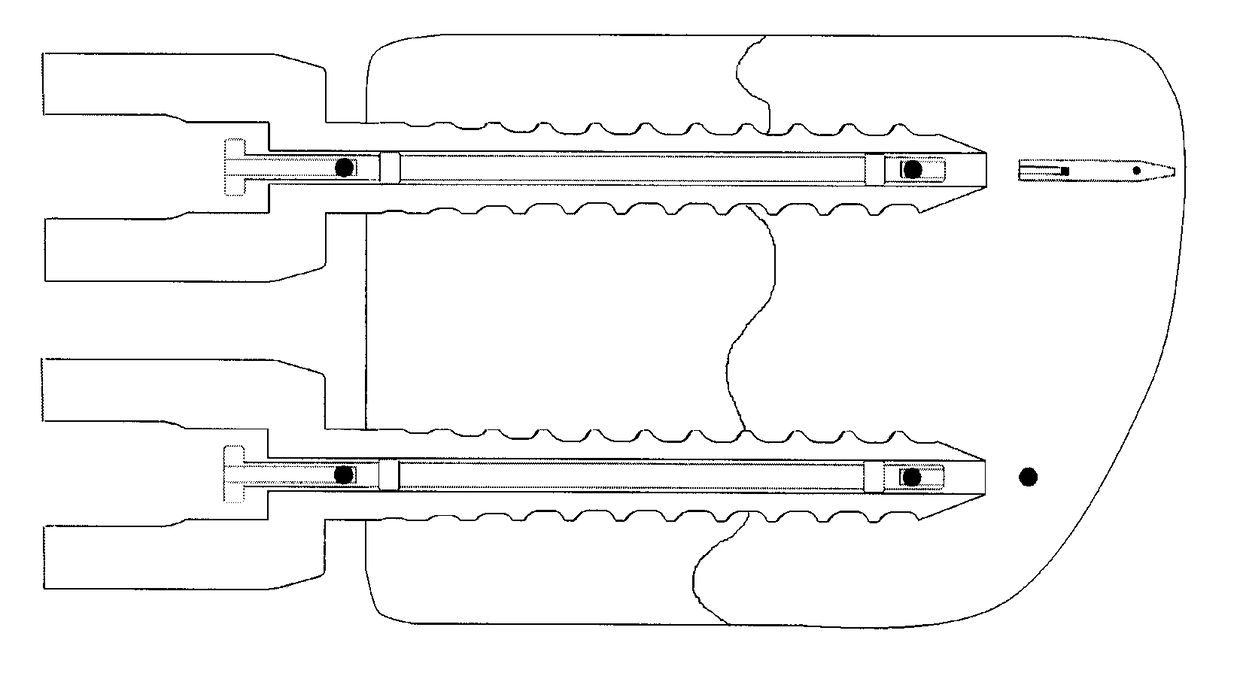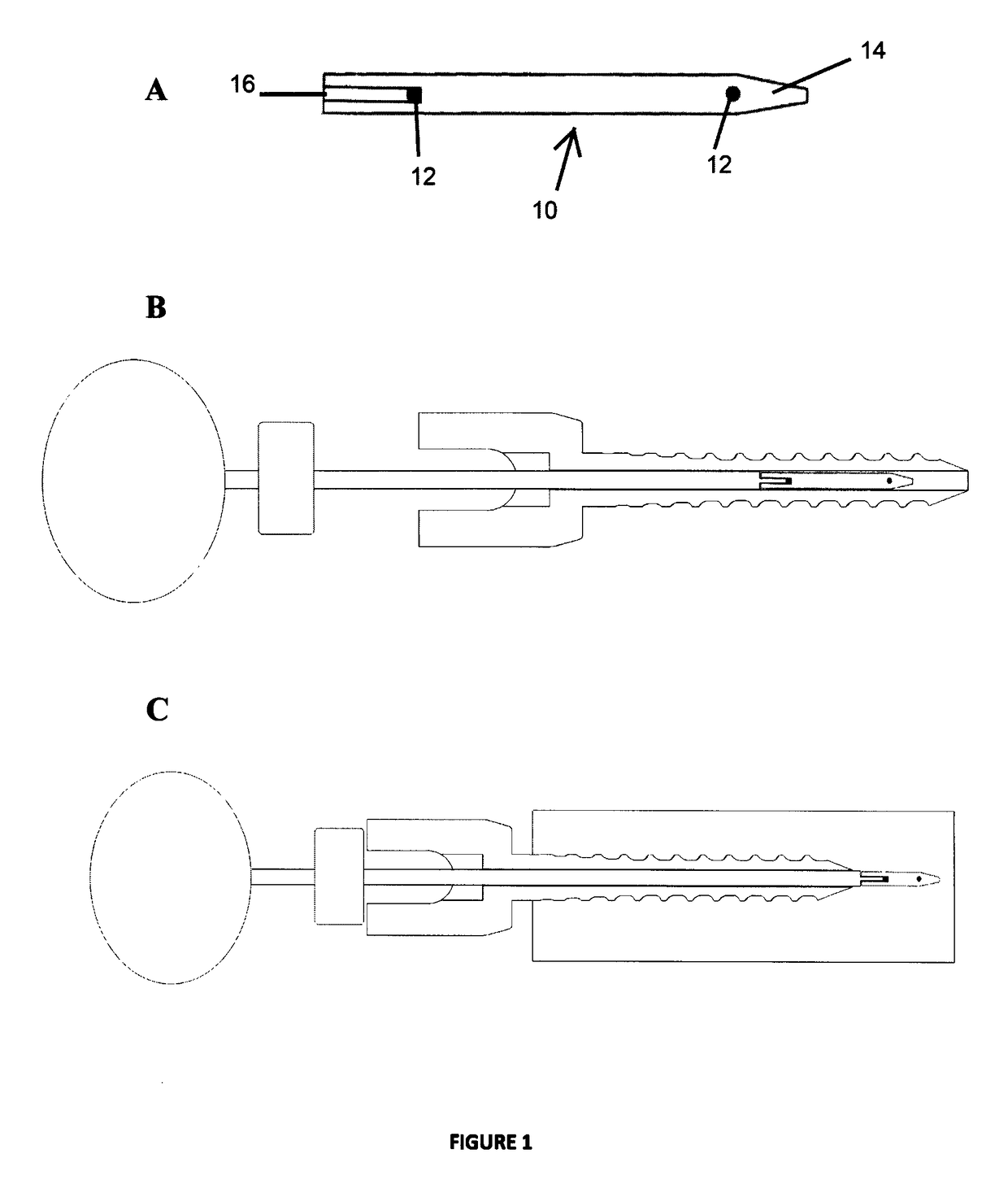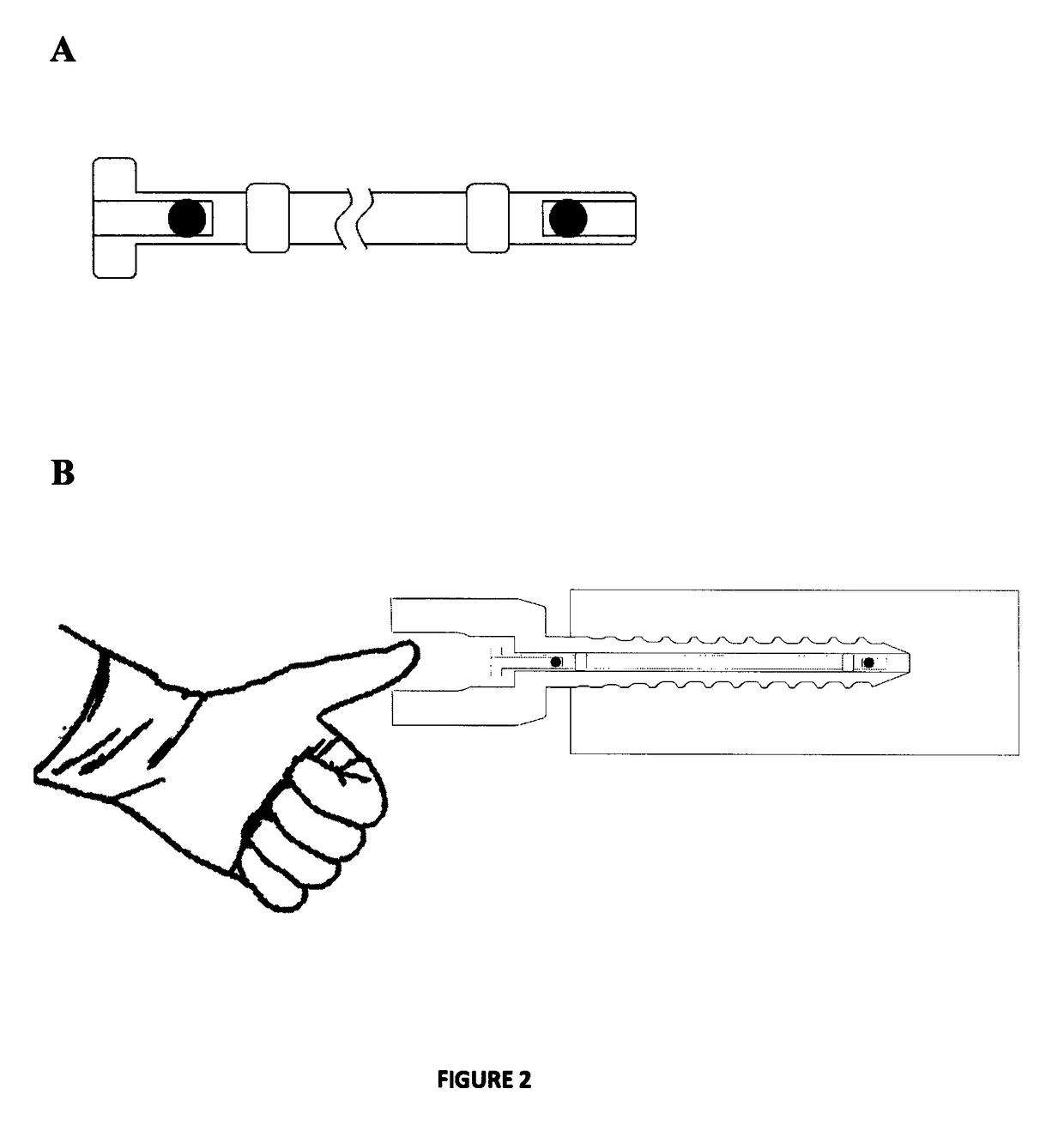Method of detecting movement between an implant and a bone
a technology of bone and implant, applied in the field of bone implants, can solve the problems of time-consuming process and the general inability to provide the desired accuracy of surgical implantation of markers
- Summary
- Abstract
- Description
- Claims
- Application Information
AI Technical Summary
Benefits of technology
Problems solved by technology
Method used
Image
Examples
Embodiment Construction
[0022]A method to detect movement between a cannulated bone implant and a bone in a patient is provided by measuring the relative position of the bone, in which one or more radiopaque bone markers have been implanted through the implant within the bone and one or more radiopaque implant markers have been implanted into the implant. The method comprises determining a first relative position of the bone marker to the implant marker under a first parameter; and determining a second relative position of the bone marker to the implant marker under a second parameter, wherein a change in the position of the bone marker relative to the implant marker from the first relative position to the second relative position is indicative of movement of either the implant or the bone.
[0023]In order to conduct the present method, one or more radiopaque markers are implanted into the bone through a cannulated implant within the bone. The use of a cannulated implant provides a means of delivering one or...
PUM
 Login to View More
Login to View More Abstract
Description
Claims
Application Information
 Login to View More
Login to View More - R&D
- Intellectual Property
- Life Sciences
- Materials
- Tech Scout
- Unparalleled Data Quality
- Higher Quality Content
- 60% Fewer Hallucinations
Browse by: Latest US Patents, China's latest patents, Technical Efficacy Thesaurus, Application Domain, Technology Topic, Popular Technical Reports.
© 2025 PatSnap. All rights reserved.Legal|Privacy policy|Modern Slavery Act Transparency Statement|Sitemap|About US| Contact US: help@patsnap.com



